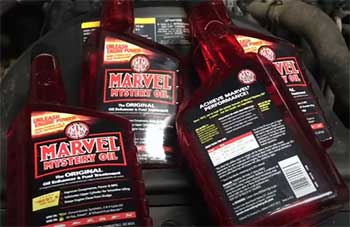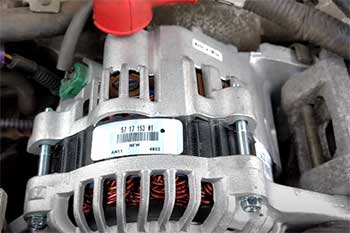Listen, if you’re anything like me, you want your engine to purr like a kitten for as long as possible—without breaking the bank on repairs. That’s where MOA oil additive comes in, and trust me, it’s worth every penny.
I’ve been using BG MOA (item model number BG MOA 110) for a while now, and it’s like giving your engine a VIP treatment. It promises to extend oil life, protect critical components, and keep excessive oil consumption at bay.
If you’re serious about your ride, you need this in your garage. Go buy it—your engine will thank you.
My Personal Journey With MOA Oil Additive
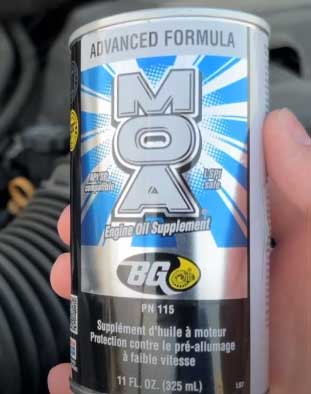
Let me take you back to when I first stumbled across MOA oil additive.
I drive a 2008 Dodge Ram—a beast of a truck with a HEMI engine that’s been through its fair share of dusty backroads and stop-and-go city traffic.
A couple of years ago, I started noticing this faint ticking noise under the hood.
At first, I brushed it off as “character,” but then I checked the oil dipstick one day and—yikes—I was nearly four quarts low.
Panic set in. I hauled it to my mechanic, expecting the worst.
He gave me that look, you know, the one that says, “You’ve probably done some damage, buddy.”
After a fresh oil change, he suggested adding a can of BG MOA.
I’ll admit, I was skeptical. I’m not big on tossing random stuff into my engine, but I figured I’d give it a shot—what did I have to lose?
Within a week, that ticking noise vanished. I couldn’t believe it. The truck felt smoother, like it had shed a layer of grime I didn’t even know was there. Since then, I’ve been hooked. I throw a can of MOA in with every oil change, and my Ram’s closing in on 300,000 miles—still on its original engine.
I’ve also got a Jeep Commander at home, pushing 275,000 miles, and I’ve been using MOA in that too. It’s not just about fixing problems; it’s about keeping things running right. I pair it with high-quality synthetic oil—usually Mobil 1—and the combo feels unstoppable.
One time, I even let the oil go a bit longer than I should’ve (life gets busy, you know?), and MOA seemed to pick up the slack. The engine didn’t feel sluggish or overworked. It’s like having an insurance policy you can pour right into your crankcase.
What sold me even more was a chat with a buddy who owns a body shop. He’s a car guy through and through—buys MOA by the case for his personal rides. He swore it quieted down his V8 after a few test drives, and when I tried it on my Ram, I noticed the same thing.
The engine just hums now, no rattles, no fuss. It’s not magic, but it sure feels close.
Pros of MOA Oil Additive
- Engine Protection That Packs a Punch
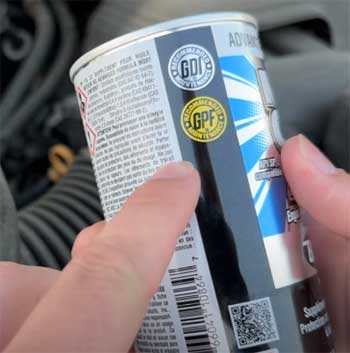
Let’s talk about what MOA does best: keeping your engine safe.
I’ve seen it firsthand—those critical components like piston rings and hydraulic lifters stay cleaner and happier with this stuff.
BG claims it prevents oxidation and thickening of oil, even under brutal conditions like high heat or constant stop-and-go driving.
I can vouch for that.
My Ram’s been through summer heatwaves and city gridlock, and the oil still looks decent when I drain it.
It’s like MOA puts a shield around your engine, fending off wear and tear.
- Extends Oil Life Like a Champ
One thing I love is not having to stress about oil changes as often. MOA’s got this knack for stretching the life of your oil. I’ve pushed my intervals a bit—don’t judge me—and the engine still runs smooth as butter.
The Thin Film Oxidation Uptake Test (yeah, it’s a mouthful) shows MOA resists oxidation over 200% longer than some big-name oils. That’s not just marketing fluff; I feel it in how my truck performs. It’s a game-changer if you’re like me and occasionally let maintenance slip.
- Quiets Things Down and Boosts Performance
You know that satisfying moment when a noisy engine settles into a low hum? MOA delivers that. When I first used it, the ticking in my Ram disappeared, and the whole truck felt smoother.
It’s not just me—my body shop buddy noticed it too on his V8. It’s like the additive slicks everything up, reducing friction and letting the engine breathe easier. I swear my Jeep even feels a tad peppier since I started using it.
- Saves You from Oil-Guzzling Nightmares
If your engine’s starting to drink oil like it’s a milkshake, MOA might just be your savior. That time I was low on oil in my Ram?
It hasn’t happened since I got religious about using this additive. BG says it prevents excessive oil consumption, and I’m living proof. My engines—both the Ram and the Jeep—stay topped off longer, which means fewer top-offs and less worry.
Cons of MOA Oil Additive
- Price Can Sting a Bit
Okay, let’s be real—MOA isn’t cheap. A can of this stuff can set you back around $10 or more, depending on where you snag it. For some of you, that might feel like a splurge, especially if you’re already shelling out for synthetic oil.
I get it; I’ve had moments where I stared at the price tag and wondered if it’s worth it. But after seeing what it’s done for my truck, I’d argue it’s a small price to pay for peace of mind.
- Hard To Prove It’s Working
Here’s the tricky part: unless you’ve got a lab in your garage, you can’t always tell if MOA’s doing its job. I mean, I feel the difference—quieter engine, smoother ride—but I can’t slap a scientific stamp on it. Some folks call it a placebo effect, and I won’t lie, I’ve wondered that myself.
Without a controlled test, you’re kind of taking it on faith. For me, the results speak loud enough, but if you’re a skeptic, this might bug you.
- Not A Fix-All Miracle
Don’t get me wrong—MOA’s great, but it’s not going to resurrect a dying engine. When my Ram was low on oil and ticking, MOA helped fix the symptoms, but if I’d ignored the problem longer, I’d probably be shopping for a new motor.
It’s a supplement, not a cure. If your engine’s already on its last legs, don’t expect MOA to pull off a miracle. It’s best for keeping a healthy engine healthy, not patching up a total mess.
Maintenance Tips With MOA Oil Additive
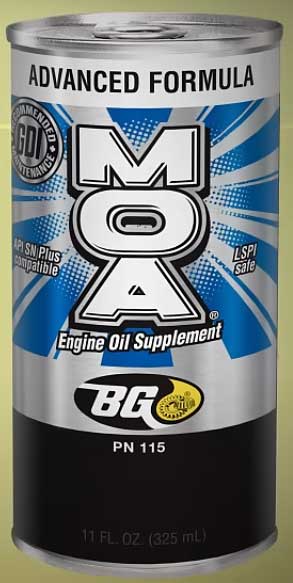
- Pair It with Quality Oil: If you’re going to use MOA, don’t skimp on the oil you mix it with. I stick to synthetic—like Mobil 1 5W-30—because it plays so well with this additive. The combo keeps my engines humming and maximizes what MOA brings to the table. You wouldn’t put cheap sauce on a gourmet steak, right? Same logic here. A good base oil lets MOA shine, protecting your engine and stretching those change intervals.
- Stick to a Schedule (Mostly): I’ll confess—I’m not perfect about oil changes. Life happens. But MOA’s forgiving nature means I can stretch things a bit without sweating it. Still, I’d say aim for every 5,000 miles or so, especially if you’re driving hard. Add a can of MOA each time, and you’ll keep that engine in top shape. It’s like giving your car a little spa day—consistent care pays off.
- Listen to Your Engine: You know your ride better than anyone. If you hear a new noise or feel something off, don’t just dump MOA in and hope for the best. That’s what I did when my Ram started ticking, and luckily it worked out, but always check your oil levels and get a pro’s opinion if it’s serious. MOA’s a helper, not a doctor. Use it as part of your routine, and stay tuned in to what your engine’s telling you.
- Don’t Overdo It: One can of MOA per oil change is plenty—trust me, you don’t need to drown your engine in it. I learned this the easy way by following the directions, but I’ve heard of folks thinking more is better. It’s not. Stick to the recommended dose, and you’ll get all the benefits without messing with your oil’s balance. Less fuss, more results.
Comparison of MOA Oil Additive With Other Brands
Let me break down how MOA oil additive stacks up against some other players I’ve tried or heard about. Instead of tossing them all in a blender, I’ll go head-to-head with a few standouts—Tribotex Nano Oil Additive, Stanadyne Diesel Fuel Additive, and HotShot’s Diesel Extreme Diesel Additive.
Each one’s got its own vibe, and I’ve got thoughts based on my own tinkering and chats with other gearheads.
- MOA Vs. Tribotex Nano Oil Additive
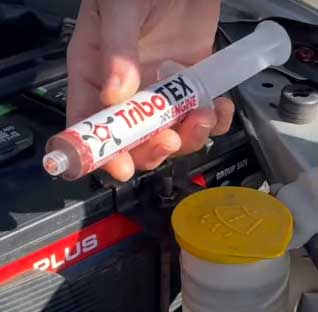
First up, Tribotex Nano Oil Additive—it’s a fancy one.
I gave it a spin in my old F350 a while back, lured in by the promise of nanotechnology repairing wear in my engine.
It’s slick, no doubt; the truck felt a bit perkier on cold starts, and the idea of “fixing” metal surfaces sounds cool.
But here’s where MOA takes the lead for me: longevity.
Tribotex is a one-time treatment, meant to coat and repair over thousands of miles, while MOA’s something I can toss in with every oil change to keep things humming.
My Ram loves MOA’s consistent protection—oxidation resistance and cleaner components—over Tribotex’s one-and-done approach. If I want ongoing care, MOA’s my pick; Tribotex feels more like a specialty fix.
- MOA Vs. Stanadyne Diesel Fuel Additive
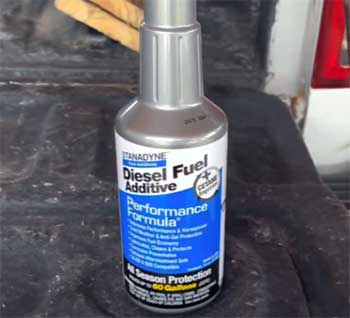
Now, Stanadyne Diesel Fuel Additive is a different beast—it’s not an oil additive, it’s a fuel treatment.
I’ve used it in a diesel pickup I borrowed from a buddy, and it’s killer for cleaning injectors and boosting cetane.
The engine ran crisper, no question, and I could feel it pulling harder.
But comparing it to MOA is apples and oranges.
Stanadyne’s working the fuel side, while MOA’s all about the oil—preventing thickening and shielding parts like piston rings. I’d say MOA wins for my gas-powered Ram because it’s tailored to my engine’s needs.
Stanadyne’s great if you’re running diesel and want fuel system love, but for oil-based protection, MOA’s got the edge in my garage.
- MOA Vs. HotShot’s Diesel Extreme Diesel Additive
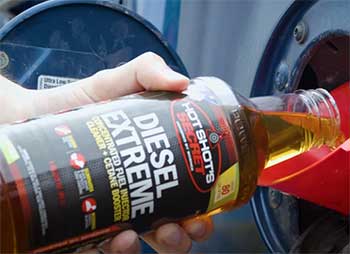
Then there’s HotShot’s Diesel Extreme Diesel Additive—another fuel-focused contender.
I tried this one during a road trip in a friend’s diesel rig, and it’s a beast at blasting carbon buildup and restoring power.
The exhaust smelled less funky, and the throttle felt sharper after a tank or two.
But again, it’s not playing in MOA’s lane. HotShot’s is a cleanup crew for diesel fuel systems, while MOA’s fortifying my oil to keep the engine itself in check.
For my Jeep and Ram, both gas engines, MOA’s the better fit—it quiets things down and stretches oil life in a way HotShot’s can’t touch.
If I had a diesel daily driver, I’d pair HotShot’s with something like MOA, but solo, MOA’s more my speed.
In the end, MOA’s versatility keeps it on top for me. Tribotex offers a cool tech trick, and Stanadyne and HotShot’s dominate in diesel fuel territory, but MOA’s broad, oil-based protection fits my rides like a glove.
It’s less about flash and more about steady, reliable results—exactly what I need for my high-mileage warriors.
Frequently Asked Questions (FAQ)
MOA’s like a supercharger for your engine oil. It prevents oxidation and thickening, keeps critical parts clean, and stops your engine from guzzling oil. I’ve seen it quiet down my Ram and keep the oil working longer—basically, it’s an all-in-one protector that makes your engine’s life easier.
Yeah, it’s been a champ for mine. My Ram and Jeep are pushing high miles, and MOA’s kept them smooth and ticking-free. It’s not a cure-all, but for maintaining a healthy engine—or saving one from minor hiccups—it’s solid. BG’s claims about protection and longevity match what I’ve experienced.
Absolutely. I use it with Mobil 1 synthetic all the time, and they get along like best buds. MOA’s designed to work with both synthetic and regular oils, so you’re good either way. Just pour it in with your oil change, and you’re set—no fuss.
Tricky one. MOA’s not marketed as a leak fixer, but I’ve heard mixed things about leak-specific additives. Some swear they seal small leaks; others say it’s a waste. I’ve never had to test that with MOA since my oil consumption’s been fine. For leaks, I’d say check the source—additives might buy time, but they’re not a permanent fix.
Conclusion: Get MOA and Keep Your Engine Happy
Alright, here’s the deal: MOA oil additive’s been a game-changer for me, and I’m betting it’ll be for you too. It’s kept my Dodge Ram and Jeep Commander running strong, mile after mile, with smoother performance and less worry.
Sure, it’s not the cheapest thing on the shelf, but the protection and peace of mind? Priceless. Head to your local shop or online and grab a can of BG MOA—you won’t regret it. Your engine deserves this kind of love.
